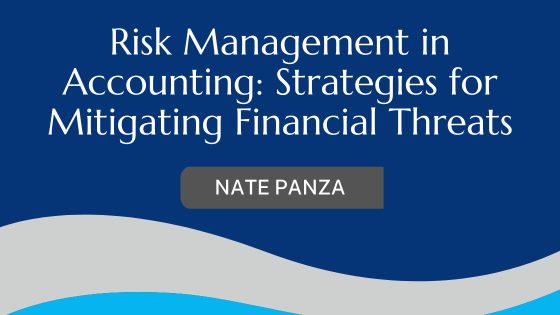In the dynamic realm of accounting, risk management isn’t just a safety net; it’s a compass guiding businesses through the unpredictable waters of financial challenges. Let’s delve into the strategies that make risk management more than just a buzzword – a practical tool for steering financial success.
Understanding Financial Risks
Financial risks come in various shapes and sizes, from market volatility and credit risks to operational and compliance risks. Each poses a unique threat to a company’s financial stability. Identifying and comprehending these risks is the initial stage of effective risk management.
Strategies for Mitigating Financial Threats
- Diversification:
-
-
- Similar to not putting all your eggs in one basket, diversification spreads investments across different assets, reducing the impact of a single financial risk.
-
- Insurance Policies:
-
-
- Insurance isn’t just for personal protection; businesses can use various insurance policies to mitigate property damage, liability, and even key-person risks.
-
- Regular Audits and Assessments:
-
-
- Regular internal and external audits help identify potential risks and ensure that existing risk management strategies remain effective.
-
- Stress Testing:
-
-
- Stress testing involves simulating adverse scenarios to evaluate how well a business can withstand potential financial shocks. It helps identify vulnerabilities and areas for improvement.
-
- Compliance Measures:
-
- Staying compliant with industry regulations and standards is a proactive approach to risk management, preventing legal and financial consequences.
The Role of Technology
In the online world, technology plays an essential role in risk management:
- Automated Monitoring Systems:
-
-
- Utilizing automated systems for continuous monitoring helps businesses identify and address risks in real time.
-
- Data Encryption and Security Measures:
-
- Protecting sensitive financial data with robust encryption and security measures safeguards against cyber threats.
Risk Management as a Continuous Process
Effective risk management is not a one-time endeavor but an ongoing process. Regularly reassessing risks, adapting to changes in the business environment, and staying abreast of emerging threats ensure that risk management remains a dynamic and evolving strategy.
Benefits of Proactive Risk Management
- Financial Stability:
-
-
- Identifying and mitigating risks early, businesses can maintain a stable financial position, even in turbulent economic times.
-
- Enhanced Decision-Making:
-
-
- A comprehensive understanding of potential risks empowers businesses to make informed and strategic decisions.
-
- Builds Stakeholder Confidence:
-
- Stakeholders, including investors and customers, gain confidence in a business that demonstrates a proactive approach to risk management.
Conclusion
In the ever-evolving accounting landscape, risk management is not just a precautionary measure but a strategic imperative. By embracing these strategies, businesses can navigate financial challenges with resilience and confidence, ensuring a smoother voyage toward lasting financial success.

